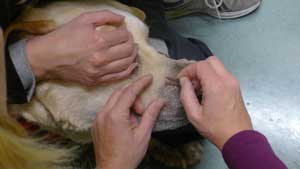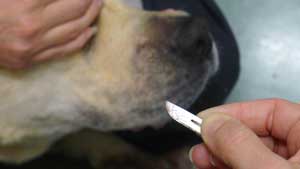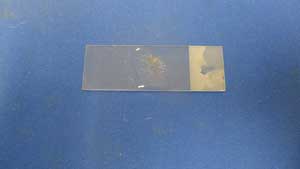New Resident Joins Animal Dermatology
 Animal Dermatology Clinic is pleased to announce that Dr. Tyler Udenberg will be joining the group in July.
Animal Dermatology Clinic is pleased to announce that Dr. Tyler Udenberg will be joining the group in July.
Originally from British Columbia, Dr. Udenberg received his DVM from the Western College of Veterinary Medicine in Saskatoon, Canada in 2009.
Dr. Udenberg completed both generalized and specialized internships at Tufts University in Massachusetts. “I am looking forward to starting my residency at Animal Dermatology Clinic. Also, living in Southern California will now give me the opportunity to participate in some of my favorite activities, hiking, swimming and snowboarding.” His professional interests include food allergies, infectious and auto-immune disease.
Dr. Udenberg becomes the 24th Resident at Animal Dermatology Clinic to enter the three-year program with the goal of obtaining Diplomate status under the auspices of the America College of Veterinary Dermatology. He will be seeing cases in Marina del Rey and Pasadena.
***DOWNLOAD THE PRINTE VERSION FOR MORE NEWS***
National Bite Prevention Week:
May 21-26
May 21-26 was National Dog Bite Prevention Week and although that date has passed, it’s not too late to learn to understand the signs of fear and anxiety in your dog that can help avoid a dog bite.
According to veterinarian and animal behaviorist Dr. Sophia Yin, the common practice of approaching a strange dog and offering your hand as a friendly gesture isn’t the safest way. The belief is that if the dog has the opportunity to smell your hand, the dog’s fears will be allayed and it will then be safe to touch the dog. Not so, says Dr. Yin. Dogs, like people, have a “personal space” and it is better for the dog to approach a person when the dog has reached its comfort level.
Dr. Yin has identified some of the body language of fear in dogs and placed them in an informative downloadable poster on her website at www.drsophiayin.com.
The associated article offers tips and suggestions when working with a fearful dog.
“For the human who is approaching, the first rule is to ask the owner first, and then ask the dog. That means, turn slightly sideways so you’re not facing the dog squarely or staring at him. Then let him approach at his own rate. If he shows any combination of signs of fear or anxiety, avoid reaching out to pet him.”
Source: Sophia Yin, DVM, MS, The Art and Science of Animal Behavior



 (Skin scrape, continued)
(Skin scrape, continued)